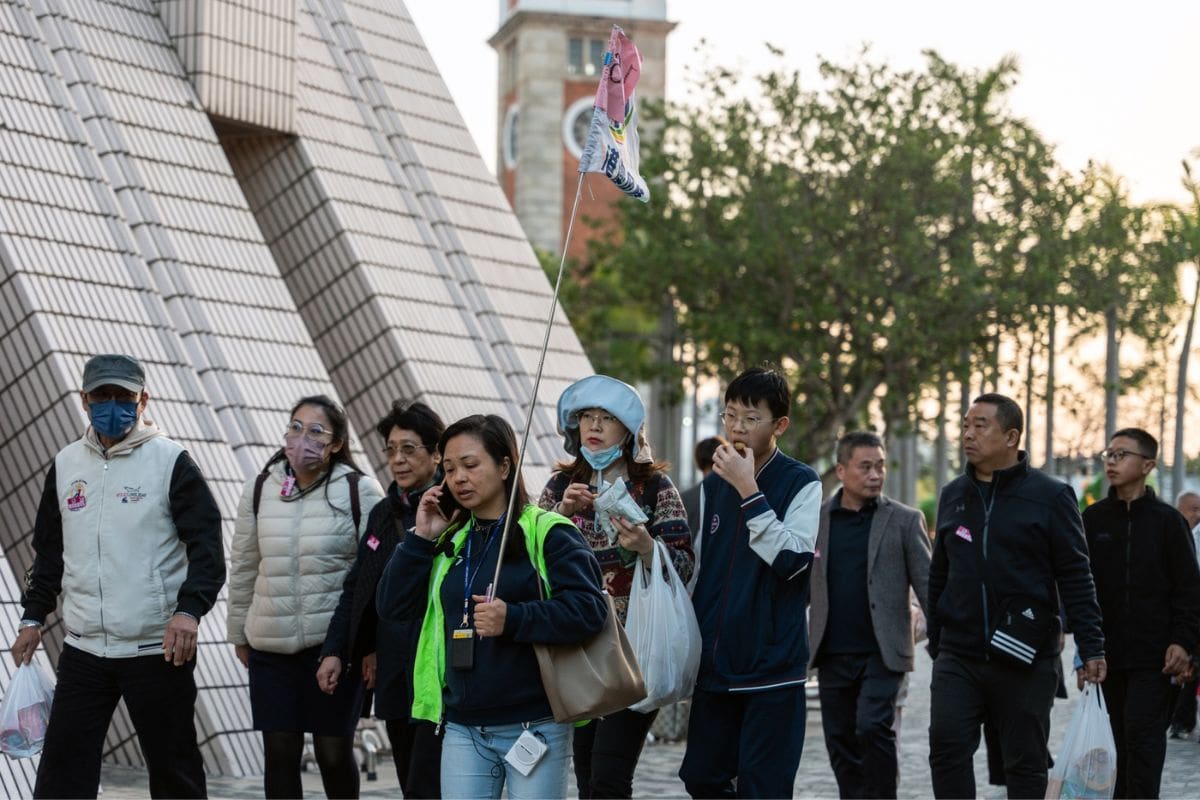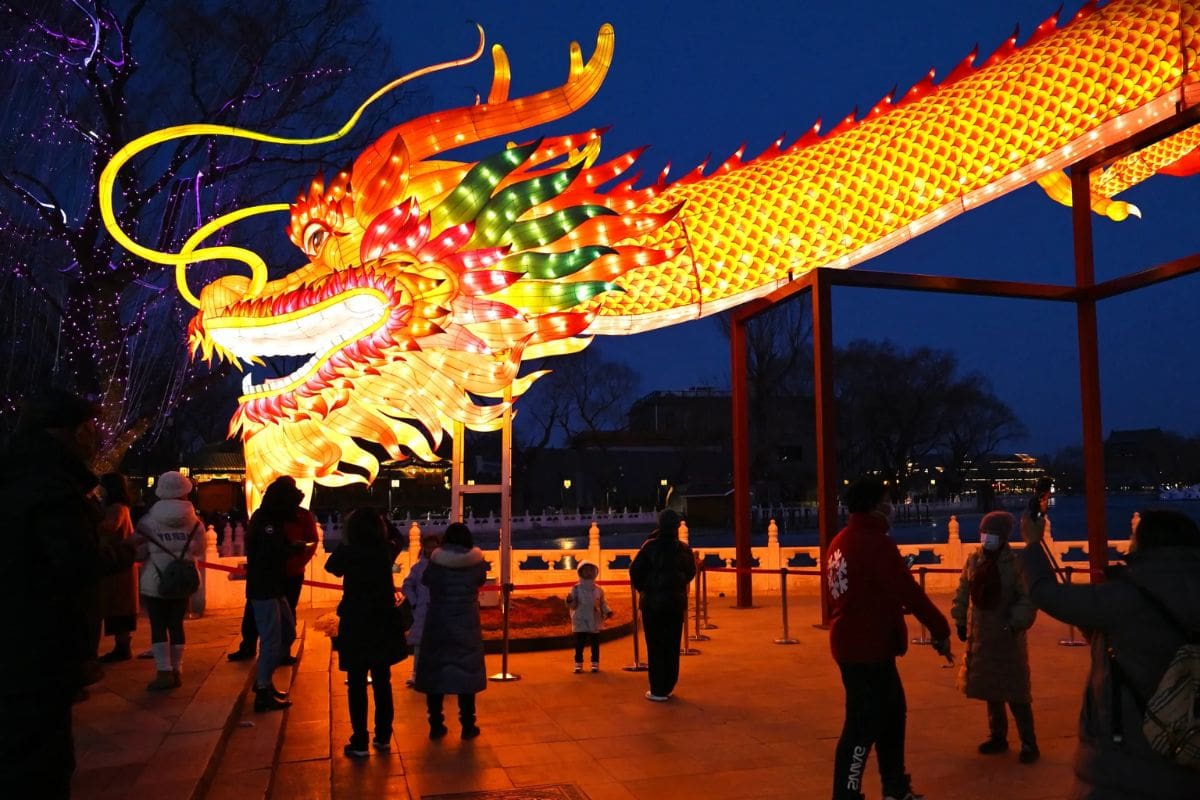China’s Lunar New Year Spending has not just rebounded but has surpassed pre-COVID levels, signaling a remarkable comeback for the tourism industry. The surge in expenditures during this festive season has left analysts astonished, raising questions about the underlying factors driving this unprecedented growth.
As travelers flock to various destinations, the implications of this spending spree extend far beyond mere economic indicators, hinting at a broader societal shift that demands closer scrutiny.
The implications of this surge in travel spending are far-reaching, challenging traditional notions of post-pandemic consumer behavior.
Key Takeaways
- Domestic tourism spending during the Lunar New Year holidays surpassed pre-pandemic levels by 47.3%.
- The surge in international travel during the holiday indicates growing confidence in safety measures.
- Cultural and entertainment activities, like film watching, saw significant participation, reflecting evolving consumer preferences.
- Challenges persist in tourism revenue sustainability despite the apparent increase in travel spending.
Surge in Tourism Revenues During Lunar New Year Holidays
The Lunar New Year holidays in China heralded an unprecedented surge in tourism revenues, marking a staggering 47.3% year-on-year increase, signaling a dynamic shift in domestic travel patterns. This surge, surpassing even pre-pandemic levels, has left industry experts astounded by the resilience and vigor of the Chinese travel market.

Also Read: Russia Lunar Mission: Moon Ambitions Reignite in a Global Space Race
The extended holiday period of eight days has undoubtedly played a pivotal role in fueling this remarkable growth, providing ample time for travelers to explore various destinations within the country. The surge in tourism revenues not only signifies a strong rebound in domestic travel but also reflects the pent-up demand and eagerness of Chinese consumers to venture out and experience the joys of travel once again.
This monumental increase in spending during the Lunar New Year holidays serves as a testament to the enduring allure of travel and the unwavering spirit of the Chinese people in the face of adversity.
Domestic Tourism Statistics
Witness the astounding surge in domestic tourism spending during China’s Lunar New Year holidays, reflecting an unprecedented shift in travel patterns. Domestic tourism spending skyrocketed to an impressive 632.7 billion yuan ($87.96 billion), showcasing a remarkable 47.3% increase from the same period in 2023.
This surge was matched by a significant uptick in the number of domestic trips taken during the holiday, which rose by 34.3% compared to the previous year, totaling a staggering 474 million trips.
The comparison to the 2019 Lunar New Year holiday pre-pandemic reveals an even more remarkable trend, with domestic tourism spending witnessing a substantial 7.7% increase and domestic trips experiencing a noteworthy 19% rise.
These statistics not only highlight the resilience of China’s domestic tourism industry but also underscore the pent-up demand for travel experiences among the Chinese population. The numbers speak for themselves, painting a picture of a nation eager to explore its own backyard and rediscover the joys of domestic travel.
Tourism Revenue Challenges and Consumption Downgrading
Amidst the impressive surge in domestic tourism spending during China’s Lunar New Year holidays, concerns loom over the sustainability of this growth as challenges persist in tourism revenue and consumption downgrading.

While the tourism sector has shown positive growth, the numbers reveal a different story. Tourism revenue per trip remains below pre-pandemic levels, signaling a bumpy road ahead for the overall economic recovery.
Analysts at Goldman Sachs have highlighted the prevalent issue of consumption downgrading, indicating that despite the apparent increase in travel spending, the underlying economic challenges persist. This disparity between the superficial spending boom and the underlying economic realities raises alarms about the long-term sustainability of the current tourism trend.
As the country grapples with consumption downgrading and uneven revenue streams in the tourism sector, it becomes evident that the road to full economic recovery may be more challenging than initially anticipated.
International Travel Trends
Surprisingly, international travel trends during the Lunar New Year holiday have shown a significant resurgence, indicating a promising shift towards global mobility recovery. Despite the challenges posed by the pandemic, the numbers speak for themselves:
- Inbound and outbound international trips during the holiday reached a staggering 13.52 million, a remarkable 2.8 times increase from the previous year.
- Total entry-exit trips during the holiday returned to 90% of 2019 levels, as reported by the National Immigration Administration.
- The surge in international travel not only reflects a pent-up demand for exploration and adventure but also signals a growing confidence in the safety measures implemented across borders.
This resurgence in international travel is a beacon of hope for the travel industry, hinting at a future where borders are no longer barriers but gateways to new experiences. The momentum gained during the Lunar New Year holiday sets a positive tone for the rest of the year, promising a revival of global connections and a resurgence of the wanderlust spirit.
Cultural and Entertainment Highlights
The unprecedented surge in international travel during the Lunar New Year holiday not only signifies a global mobility revival but also underscores a significant shift towards a heightened focus on cultural and entertainment highlights within China.
Film watching took center stage as a popular entertainment activity during the holiday, with the country’s box office revenue skyrocketing to over 8 billion yuan ($1.11 billion) over the eight days. This remarkable feat, reported as a new record high by the China Film Administration, highlights the transformative power of cultural activities in propelling economic indicators.
Despite facing economic challenges such as a property downturn and sluggish demand, the emphasis on cultural and entertainment pursuits offers valuable insights into evolving consumer behavior and preferences.

Conclusion Of China’s Lunar New Year Spending
The unprecedented surge in tourism spending during China’s Lunar New Year holidays has shattered pre-COVID records, marking a remarkable revival for the industry.
Despite challenges in tourism revenue and consumption downgrading, domestic travel has shown resilience, while international travel remains a distant dream.
With cultural and entertainment activities attracting crowds, the future of tourism in China looks promising, promising a bright and prosperous future for the industry.
Our Reader’s Queries
Q1 Is it Chinese New Year or Lunar?
A Lunar New Year in the United States is closely linked to Chinese Americans, often referred to as “Chinese New Year” by those from non-Chinese backgrounds. In certain countries like Singapore, Brunei, and Malaysia, Chinese New Year is the official term for this festive celebration and holiday.
Q2 Why is Lunar New Year in february?
Q3 How many days is Chinese New Year?

